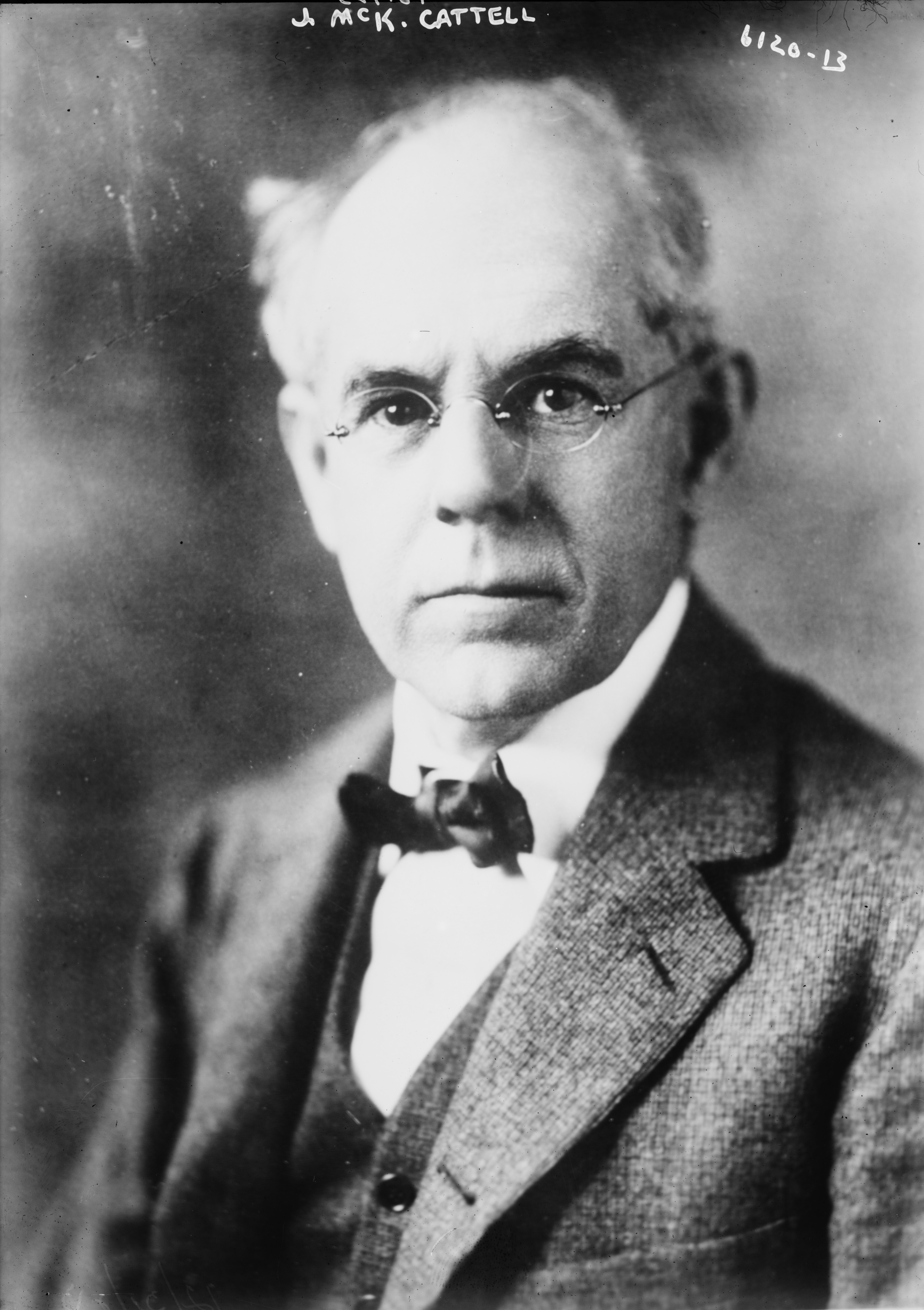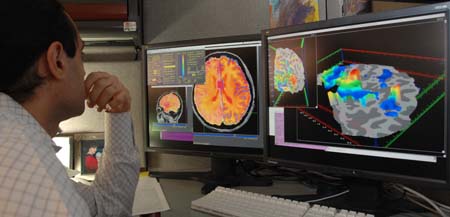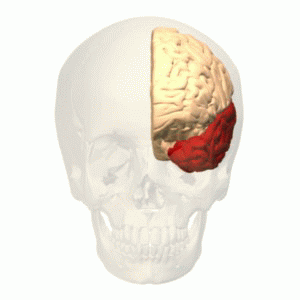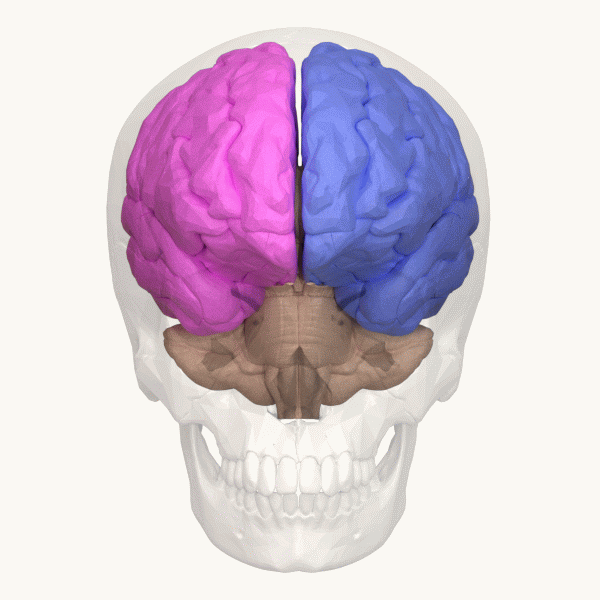|
Lexical Decision Task
The lexical decision task (LDT) is a procedure used in many psychology and psycholinguistics experiments. The basic procedure involves measuring how quickly people classify stimuli as words or nonwords. Although versions of the task had been used by researchers for a number of years, the term ''lexical decision task'' was coined by David E. Meyer and Roger W. Schvaneveldt, who brought the task to prominence in a series of studies on semantic memory and word recognition in the early 1970s. Since then, the task has been used in thousands of studies, investigating semantic memory and lexical access in general. The task Subjects are presented, either visually or auditorily, with a mixture of words and logatomes or pseudowords (nonsense strings that respect the phonotactics, phonotactic rules of a language, like ''trud'' in English). Their task is to indicate, usually with a button-press, whether the presented stimulus is a word or not. The analysis is based on the reaction times ( ... [...More Info...] [...Related Items...] OR: [Wikipedia] [Google] [Baidu] |
Psychology
Psychology is the scientific study of mind and behavior. Its subject matter includes the behavior of humans and nonhumans, both consciousness, conscious and Unconscious mind, unconscious phenomena, and mental processes such as thoughts, feelings, and motivation, motives. Psychology is an academic discipline of immense scope, crossing the boundaries between the Natural science, natural and social sciences. Biological psychologists seek an understanding of the Emergence, emergent properties of brains, linking the discipline to neuroscience. As social scientists, psychologists aim to understand the behavior of individuals and groups.Hockenbury & Hockenbury. Psychology. Worth Publishers, 2010. A professional practitioner or researcher involved in the discipline is called a psychologist. Some psychologists can also be classified as Behavioural sciences, behavioral or Cognitive science, cognitive scientists. Some psychologists attempt to understand the role of mental functions in i ... [...More Info...] [...Related Items...] OR: [Wikipedia] [Google] [Baidu] |
Priming (psychology)
Priming is a concept in psychology and psycholinguistics to describe how exposure to one stimulus may influence a response to a subsequent stimulus, without conscious guidance or intention. The priming effect is the positive or negative effect of a rapidly presented stimulus (priming stimulus) on the processing of a second stimulus (target stimulus) that appears shortly after. Generally speaking, the generation of priming effect depends on the existence of some positive or negative relationship between priming and target stimuli. For example, the word ''nurse'' might be recognized more quickly following the word ''doctor'' than following the word ''bread''. Priming can be perceptual, associative, repetitive, positive, negative, affective, semantic, or conceptual. Priming effects involve word recognition, semantic processing, attention, unconscious processing, and many other issues, and are related to differences in various writing systems. How quickly this effect occurs is conte ... [...More Info...] [...Related Items...] OR: [Wikipedia] [Google] [Baidu] |
Psychology Experiments
Experimental psychology is the work done by those who apply experimental methods to psychological study and the underlying processes. Experimental psychologists employ human participants and animal subjects to study a great many topics, including (among others) sensation, perception, memory, cognition, learning, motivation, emotion; developmental processes, social psychology, and the neural substrates of all of these. History Early experimental psychology Wilhelm Wundt Experimental psychology emerged as a modern academic discipline in the 19th century when Wilhelm Wundt introduced a mathematical and experimental approach to the field. Wundt founded the first psychology laboratory in Leipzig, Germany. Other experimental psychologists, including Hermann Ebbinghaus and Edward Titchener, included introspection in their experimental methods. Charles Bell Charles Bell was a British physiologist whose main contribution to the medical and scientific community was ... [...More Info...] [...Related Items...] OR: [Wikipedia] [Google] [Baidu] |
Hypernym
Hypernymy and hyponymy are the semantic relations between a generic term (''hypernym'') and a more specific term (''hyponym''). The hypernym is also called a ''supertype'', ''umbrella term'', or ''blanket term''. The hyponym names a subtype of the hypernym. The semantic field of the hyponym is included within that of the hypernym. For example, "pigeon", "crow", and "hen" are all hyponyms of "bird" and "animal"; "bird" and "animal" are both hypernyms of "pigeon", "crow", and "hen". A core concept of hyponymy is ''type of'', whereas ''instance of'' is differentiable. For example, for the noun "city", a hyponym (naming a type of city) is "capital city" or "capital", whereas "Paris" and "London" are instances of a city, not types of city. Discussion In linguistics, semantics, general semantics, and ontologies, hyponymy () shows the relationship between a generic term (hypernym) and a specific instance of it (hyponym). A hyponym is a word or phrase whose semantic field is more ... [...More Info...] [...Related Items...] OR: [Wikipedia] [Google] [Baidu] |
Idioms
An idiom is a phrase or expression that largely or exclusively carries a figurative or non-literal meaning, rather than making any literal sense. Categorized as formulaic language, an idiomatic expression's meaning is different from the literal meanings of each word inside it. Idioms occur frequently in all languages. In English alone there are an estimated twenty-five thousand idiomatic expressions. Some well known idioms in English are "spill the beans" (meaning "reveal secret information"), "it's raining cats and dogs" (meaning "it's raining intensely"), and "break a leg" (meaning "good luck"). Derivations Many idiomatic expressions were meant literally in their original use, but occasionally the attribution of the literal meaning changed and the phrase itself grew away from its original roots—typically leading to a folk etymology. For instance, the phrase "spill the beans" (meaning to reveal a secret) is first attested in 1919, but has been said to originate from an ... [...More Info...] [...Related Items...] OR: [Wikipedia] [Google] [Baidu] |
FMRI
Functional magnetic resonance imaging or functional MRI (fMRI) measures brain activity by detecting changes associated with blood flow. This technique relies on the fact that cerebral blood flow and neuronal activation are coupled. When an area of the brain is in use, blood flow to that region also increases. The primary form of fMRI uses the blood-oxygen-level dependent (BOLD) contrast, discovered by Seiji Ogawa in 1990. This is a type of specialized brain and body scan used to map neural activity in the brain or spinal cord of humans or other animals by imaging the change in blood flow ( hemodynamic response) related to energy use by brain cells. Since the early 1990s, fMRI has come to dominate brain mapping research because it does not involve the use of injections, surgery, the ingestion of substances, or exposure to ionizing radiation. This measure is frequently corrupted by noise from various sources; hence, statistical procedures are used to extract the underlying signa ... [...More Info...] [...Related Items...] OR: [Wikipedia] [Google] [Baidu] |
Medial Temporal Lobe
The temporal lobe is one of the four major lobes of the cerebral cortex in the brain of mammals. The temporal lobe is located beneath the lateral fissure on both cerebral hemispheres of the mammalian brain. The temporal lobe is involved in processing sensory input into derived meanings for the appropriate retention of visual memory, language comprehension, and emotion association. ''Temporal'' refers to the head's temples. Structure The temporal lobe consists of structures that are vital for declarative or long-term memory. Declarative (denotative) or explicit memory is conscious memory divided into semantic memory (facts) and episodic memory (events). The medial temporal lobe structures are critical for long-term memory, and include the hippocampal formation, perirhinal cortex, parahippocampal, and entorhinal neocortical regions. The hippocampus is critical for memory formation, and the surrounding medial temporal cortex is currently theorized to be critical f ... [...More Info...] [...Related Items...] OR: [Wikipedia] [Google] [Baidu] |
Semantic Processing
In psycholinguistics, semantic processing is the stage of language processing that occurs after one hears a word and encodes its meaning: the mind relates the word to other words with similar meanings. Once a word is perceived, it is placed in a context mentally that allows for a deeper processing. Therefore, semantic processing produces memory traces that last longer than those produced by shallow processing, since shallow processing produces fragile memory traces that decay rapidly. Proper semantic cognition requires 1) knowledge about the item/word and its features or associations, 2) retrieving the proper information that fits one's current goals and situation. For example, if one saw a sign while driving that said “fork in the road ahead” they should be able to inhibit a strong association (e.g., silverware), and retrieve a distant association that is more relevant meaning (e.g., road structures). Semantic processing is the deepest level of processing and it require ... [...More Info...] [...Related Items...] OR: [Wikipedia] [Google] [Baidu] |
Lateralization Of Brain Function
The lateralization of brain function (or hemispheric dominance/ lateralization) is the tendency for some neural functions or cognitive processes to be specialized to one side of the brain or the other. The median longitudinal fissure separates the human brain into two distinct cerebral hemispheres connected by the corpus callosum. Both hemispheres exhibit Brain asymmetry, brain asymmetries in both structure and neuronal network composition associated with specialized function. Lateralization of brain structures has been studied using both healthy and split-brain patients. However, there are numerous counterexamples to each generalization and each human's brain develops differently, leading to unique lateralization in individuals. This is different from specialization, as lateralization refers only to the function of one structure divided between two hemispheres. Specialization is much easier to observe as a trend, since it has a stronger Anthropology, anthropological history. T ... [...More Info...] [...Related Items...] OR: [Wikipedia] [Google] [Baidu] |
Priming (psychology)
Priming is a concept in psychology and psycholinguistics to describe how exposure to one stimulus may influence a response to a subsequent stimulus, without conscious guidance or intention. The priming effect is the positive or negative effect of a rapidly presented stimulus (priming stimulus) on the processing of a second stimulus (target stimulus) that appears shortly after. Generally speaking, the generation of priming effect depends on the existence of some positive or negative relationship between priming and target stimuli. For example, the word ''nurse'' might be recognized more quickly following the word ''doctor'' than following the word ''bread''. Priming can be perceptual, associative, repetitive, positive, negative, affective, semantic, or conceptual. Priming effects involve word recognition, semantic processing, attention, unconscious processing, and many other issues, and are related to differences in various writing systems. How quickly this effect occurs is conte ... [...More Info...] [...Related Items...] OR: [Wikipedia] [Google] [Baidu] |
Semantics
Semantics is the study of linguistic Meaning (philosophy), meaning. It examines what meaning is, how words get their meaning, and how the meaning of a complex expression depends on its parts. Part of this process involves the distinction between sense and reference. Sense is given by the ideas and concepts associated with an expression while reference is the object to which an expression points. Semantics contrasts with syntax, which studies the rules that dictate how to create grammatically correct sentences, and pragmatics, which investigates how people use language in communication. Lexical semantics is the branch of semantics that studies word meaning. It examines whether words have one or several meanings and in what lexical relations they stand to one another. Phrasal semantics studies the meaning of sentences by exploring the phenomenon of compositionality or how new meanings can be created by arranging words. Formal semantics (natural language), Formal semantics relies o ... [...More Info...] [...Related Items...] OR: [Wikipedia] [Google] [Baidu] |
Mental Representation
A mental representation (or cognitive representation), in philosophy of mind, cognitive psychology, neuroscience, and cognitive science, is a hypothetical internal cognitive symbol that represents external reality or its abstractions. Mental representation is the mental imagery of things that are not actually present to the senses. In contemporary philosophy, specifically in fields of metaphysics such as philosophy of mind and ontology, a mental representation is one of the prevailing ways of explaining and describing the nature of ideas and concepts. Mental representations (or mental imagery) enable representing things that have never been experienced as well as things that do not exist. Our brains and mental imageries allow us to imagine things have either never happened or are impossible and do not exist. Although visual imagery is more likely to be recalled, mental imagery may involve representations in any of the sensory modalities, such as hearing, smell, or taste. S ... [...More Info...] [...Related Items...] OR: [Wikipedia] [Google] [Baidu] |









